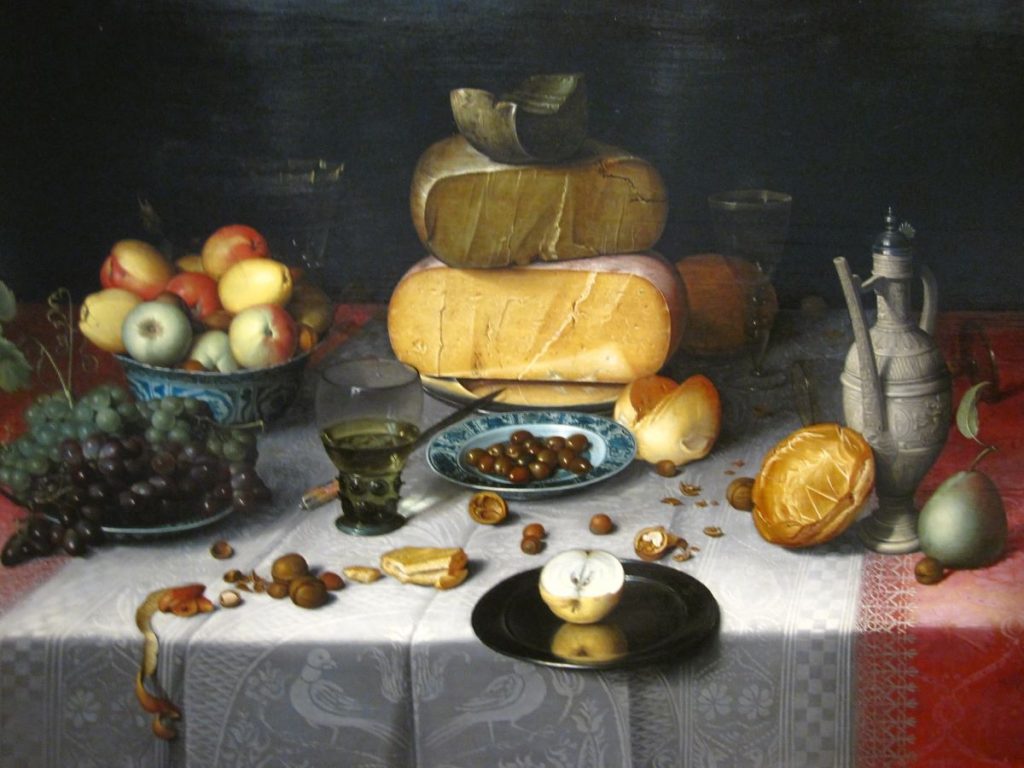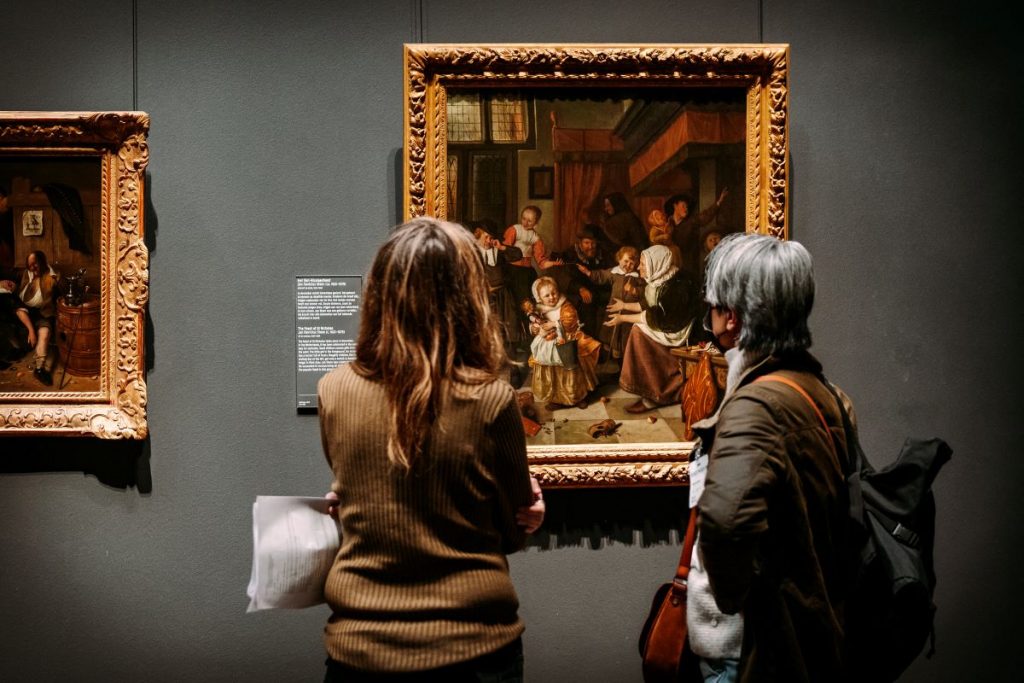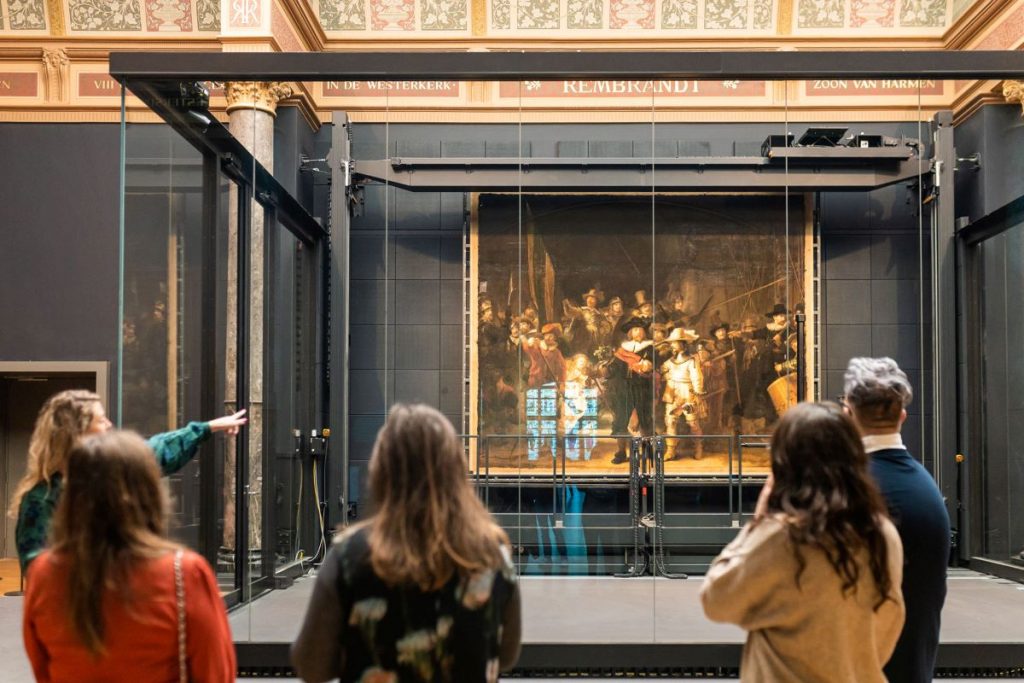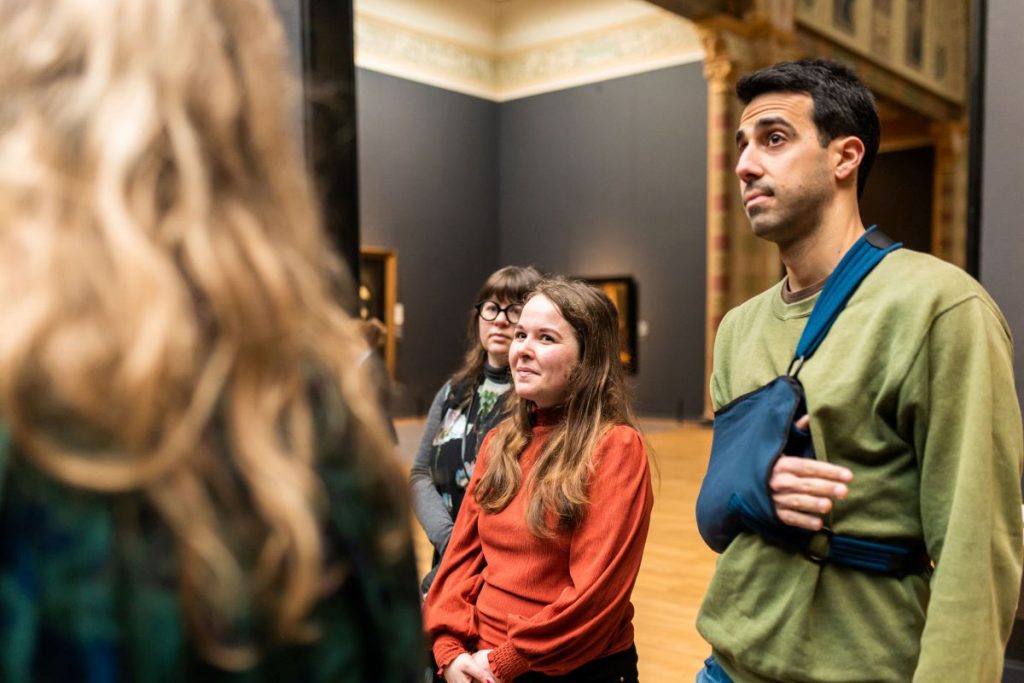Known for showcasing art by the Netherlands’ greatest painters, the Rijksmuseum is an absolute must-visit when in Amsterdam. But it is, unsurprisingly, a huge museum.
With so much to see, you’re going to need to prioritize. Which is why we’ve put together a guide to the top 12 can’t-miss works and a few other tips to help you make the most of your Rijksmuseum ticket.

How to get around the Rijksmuseum
Whichever side of the building you enter from, the architecture of the Rijksmuseum – designed by Pierre Cuypers and mirroring Amsterdam Central Station at the other end of the city – is impressive enough by itself. As you walk through the tunnel, look up at the vaulted archways which provide perfect acoustics for the live musicians who are almost always there to greet you.
Once inside, head up to the ornate Great Hall on the second floor before moving into the Gallery of Honour to start your tour of the Rijksmuseum.
What’s striking is that, although the artworks on display are (in many cases) hundreds of years old, they tell you everything you need to know about Dutch contemporary life–and the history that brought Holland to where it is today.

Famous paintings at the Rijksmuseum
Johannes Vermeer, Milkmaid
Vermeer’s iconic “Milkmaid” captures a serene domestic scene that’s been reproduced on coffee mugs all over the world.
The meticulous attention to light and texture illustrates the era’s admiration for household virtues and the beauty in ordinary activities, highlighting the Dutch values of hard work and humility during the 17th century.

Floris van Dijck, Still Life with Cheese
The Dutch are famous for their cheese, and this painting showcases the prosperity of the Dutch Golden Age through its detailed depiction of luxurious food.
The assortment of cheeses, fruits, and bread exemplifies the wealth of the nation’s trade networks and the cultural importance placed on culinary excellence and abundance in Dutch society at the time.

Jan Steen, Feast of St Nicholas
Steen’s feast day painting offers a lively portrayal of a Dutch family celebrating the much-loved Sinterklaas tradition.
The artwork’s chaotic joy captures the essence of Dutch festivity and familial warmth, while also serving as a subtle commentary on human behavior and social norms within the 17th-century Dutch household.

Ruisdael, Windmill at Wijk bij Duurstede
Windmills still epitomize the Dutch landscape to this day. In this painting, the imposing windmill symbolizes the ingenuity and industrious spirit of the Dutch, harnessing nature’s power to reclaim and cultivate land for prosperity.
The large gray skies are also a frequent feature of Dutch weather.

Rembrandt van Rijn, Jewish Bride
Rembrandt’s oft-reproduced “Jewish Bride” is a poignant depiction of love and human connection.
This masterpiece exemplifies Rembrandt’s skill in capturing intimate moments, offering insight into the personal and social dynamics of the time.

Rembrandt van Rijn, Night Watch
Many people come to the Rijksmuseum solely to see the Night Watch, an impressive opus that spans an entire wall.
Rembrandt’s use of light and composition to portray the militia company illustrates the importance of community defense and organization, highlighting the collaborative spirit that was integral to Dutch urban life in the 17th century and still today.

Gerrit Berkheyde, Golden Bend
Berkheyde’s “Golden Bend” captures the grandeur and wealth of Amsterdam’s canal houses on the Herengracht (which you can still see on canal tours today).
This detailed urban landscape reflects the prosperity brought by trade and commerce during the Dutch Golden Age, highlighting the architectural splendor and the socio-economic status of the city’s elite.

Vincent Van Gogh, Self-portrait
Arguably the Netherlands’ most famous painter, Vincent Van Gogh’s art in Amsterdam is symbolic of Dutch artistic innovation.
The bold colors and expressive brushstrokes in his self-portrait reflect the emotional intensity and inner turmoil of the artist, representing the struggles and resilience that resonate with the human experience.

Javanese court officials
The depiction and clothing of Javanese court officials highlights the Dutch colonial presence in Indonesia.
This artwork provides a window into the interactions between Dutch colonizers and the local Javanese elite, reflecting the complex cultural and political exchanges that characterized the colonial period in Dutch history.

Other famous works of art
Adriaen de Vriend/Corn. Moesman, William Rex
This intricate model ship “William Rex” symbolizes the maritime prowess and naval ambition of the Dutch Republic, which has always been a seafaring nation.
This detailed replica reflects the significance of naval power in Dutch history and the pride in their shipbuilding capabilities, which were crucial to the country’s economic and military success.

Dolls’ House Oortman
The Dolls’ House of Petronella Oortman is an entire canal house in miniature, offering a fascinating glimpse into the domestic life of a wealthy Dutch household.
Meticulously crafted and richly furnished, it represents the importance of home, family, and social status in Dutch culture.

De Metaale Pot, Flower pyramids
The strangely shaped “Flower pyramids” vases were used to display tulips and other flowers, reflecting the era’s floral mania and the economic significance of the tulip trade in Dutch society.
Note the interesting combination of styles between Delft Blue and Chinese art.

Pro Rijksmuseum tips
To get the most out of your visit:
- Download the Rijksmuseum app beforehand (although the museum also has free Wi-Fi if you forget).
- Be sure to buy your ticket online beforehand (and be prepared to wait in line anyway) – the Rijksmuseum is popular come rain or shine, in summer or winter.
- The museum curators have already put together a self-guided tour of the most iconic artworks (including lots of those listed above) but you can also create your own customized route based on the specific works you want to see.
- Be sure to enable location services so you can use the map functionality to navigate around (the museum is truly vast) and bring headphones to make the experience that much more comfortable.

Ready to turn your trip into an unforgettable experience?
Discover the full range of expertly led experiences at Take Walks Tours where passionate local guides bring history, stories, and iconic sights to life. From world-famous landmarks and museums to immersive food and cultural experiences, these small-group guided tours offer deeper insight, seamless access, and unforgettable moments you’d miss on your own.
Explore with experts who know it best, and see the country through local eyes.
